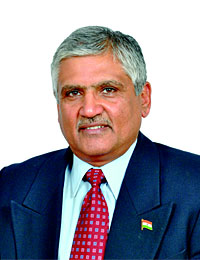Publisher's Note
 What exactly does it mean to be excellent at lubrication? Is lubrication excellence a destination, or is it a journey on the path to re-inventing a plant's entire approach to lubrication?
What exactly does it mean to be excellent at lubrication? Is lubrication excellence a destination, or is it a journey on the path to re-inventing a plant's entire approach to lubrication?
Unfortunately, many organizations approach lubrication excellence like a program, similar to a capital project, with a defined beginning, middle and end. In other words, it is something that must be defined by a clear return on investment within a predetermined time period.
Lubrication excellence is not about one single activity or collection of activities over a specific time period, but rather a continual journey which should be aimed at changing the lifestyle of the plant. Lubrication excellence involves changing the process of lubrication, not just purchasing tangible products or services.
The first phase in the process is planning. Training is clearly a critical component of the cultural transformation process. In addition to a general training course, it is appropriate to have open forum discussions with various groups and departments to discuss their specific roles.
During the planning phase, it is also necessary to assess the organization’s computerized maintenance management system (CMMS) and other planning support systems to define how the new 2 | November - December 2019 | program needs to be structured from a document management and information flow perspective.
There are four major activities in the design and install phase of the transformation process: design, installation, documentation, and coaching and ad hoc training. The design aspects are technical in nature and require individuals with special skills and experience to complete.
Lubricant contamination control is an effective mechanism. The oil analysis and inspection program is the scorecard for a controlled and managed lubrication program. It ensures that contamination control and lubrication management efforts are effective. Likewise, oil analysis provides advance warning, which enables a decisive and targeted response to abhorrent machine and/or lubricant conditions that could compromise reliability.
Many lubrication problems begin with poor handling and inventory practices. It is necessary to optimally design a lubricant purchasing, storage and handling process.
Occasionally, it is necessary to adjust the lubricant selection. Several reasons may prompt such a decision.
Once the various aspects of the new lubrication program have been designed, it is usually necessary to purchase and install hardware, and in some cases, software and instruments.
www.machinerylubricationindia.com Upon completion of the design and installation phase, and after procedures are written, it is time to deploy lubrication excellence.
Today, managers and owners must look to maintenance and reliability to improve profits in their plants and factories. For most, improving lubrication practices represents “low-hanging fruit” that is ripe for the picking. Many have attempted to shortcut the pathway to lubrication excellence by purchasing special lubricants, instruments or other gadgets. Regrettably, but predictably, many have failed.
Don’t expect these changes to come overnight. To succeed, you must engage in sustained effort to transform the culture and usher in the new business-as-usual.
We would like to thank our readers for the great response to our anniversary issue. Our current issue’s cover story is “Creating a Culture of Lubrication Excellence and Reliability-Centered Maintenance” which will help our readers to know how a company creates a world-class lubrication program.
Wishing you all Happy and Prosperous New Year 2020 filled with abundance joy and treasured moments.
Warm regards,
Udey Dhir
